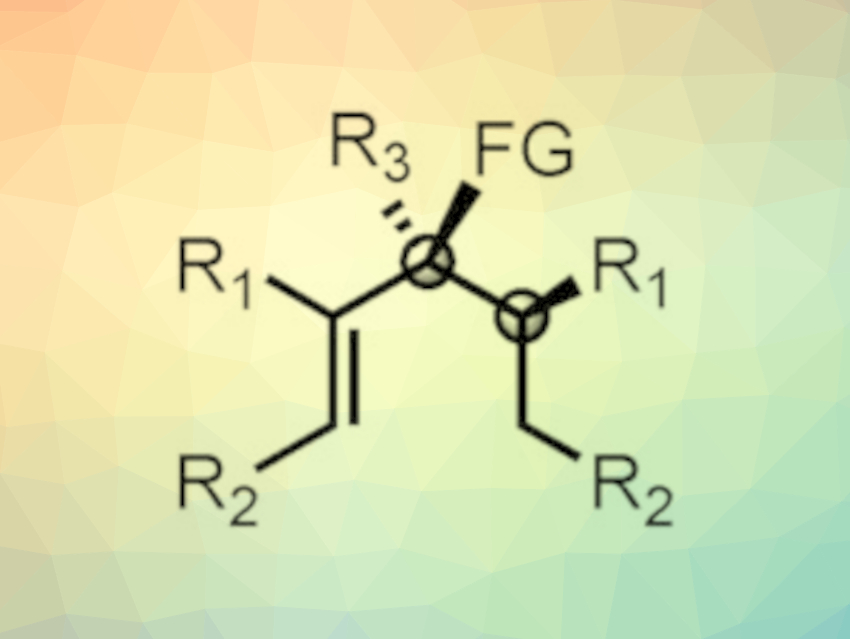The cost-effectiveness of drug synthesis depends on a number of factors, including the amount of waste produced. Pher G. Andersson, Stockholm University, Sweden, and University of Kwazulu-Natal, Durban, South Africa, and colleagues have discovered a catalyst that achieves exceptionally high-precision addition of hydrogen to carbon–carbon bonds, improving targeted synthesis by avoiding convoluted multi-step processes, and reducing wasteful by-products. The researchers consider the reaction especially useful in the production of complex natural substances such as pheromones.
Natural Substances as Drug Leads
The natural world contains a vast array of natural products, many of which have also become indispensable drugs for humans. For example, plant-based natural substances such as polyketides and pheromones have significant potential as antitumor drugs and antibiotics. However, many of these pharmaceutically active substances are only effective in one of their two possible configurations, akin to mirror images of each other, and may even be harmful in the other form.
To ensure that the right substance is produced, synthetic chemists generally have no choice but to be wasteful: either by using convoluted processes or performing a number of different steps. For example, they might synthesize both forms of a compound, then have to eliminate the unwanted one, or they might use a specific, but potentially expensive, catalyst to only produce the form of interest.
Iridium-Catalyzed Hydrogen Addition
The team discovered that a catalyst made of the heavy metal iridium and organic phosphorus-nitrogen units is exceptionally good at hydrogenating symmetrical organic compounds. The ensuing reaction is not only highly economical, with no by-products formed, but also particularly important for drug synthesis since the configuration—that is, the handedness of the product—is decided at the time of hydrogenation.
Simple, symmetrical unsaturated bonds are suitable as precursors for the synthesis of polyketides and pheromone-derived natural products. The team’s iridium catalyst makes it possible to hydrogenate one of the symmetrical carbon–carbon bonds in a targeted way. “This method represents the first example of iridium-catalyzed hydrogenative desymmetrization of dienes,” the researchers say. They demonstrated just how useful their new method could be using dozens of precursor substances that they converted to the desired products. In every case, virtually no by-products were formed.
Economical and Versatile Synthesis
The target configuration at the oxygen group near an unsaturated bond was decisive in the success of this approach. Many pheromones or polyketides contain the so-called allyl carbinols with this oxygen-carbon arrangement, while others contain nitrogen groups and are referred to as allyl carbamines. Regardless of whether the iridium catalyst was used on nitrogen or oxygen, it gave the correct end configuration. Another common structural motif in natural substances is the lactones. Even confronted with this structure, the iridium catalyst performed well and the researchers were able to find a simple synthesis route by hydrogenative desymmetrization.
The researchers also used the new method to carry out formal total syntheses of two natural substances: firstly, zaragozic acid, a polyketide obtained from fungi, and secondly, invictolide, an ant pheromone. The team is confident that, because of the high level of selectivity and the virtually total preference for one configuration, giving the product with the correct handedness, the method is an economical and versatile alternative for synthesizing many pharmaceutical products.
- Site‐ and Enantioselective Iridium‐Catalyzed Desymmetric Mono‐Hydrogenation of 1,4‐Dienes,
Haibo Wu, Hao Su, Erik J. Schulze, Bram B. C. Peters, Mark D. Nolan, Jianping Yang, Thishana Singh, Mårten S. G. Ahlquist, Pher G. Andersson,
Angew. Chem. Int. Ed. 2021.
https://doi.org/10.1002/anie.202107267




